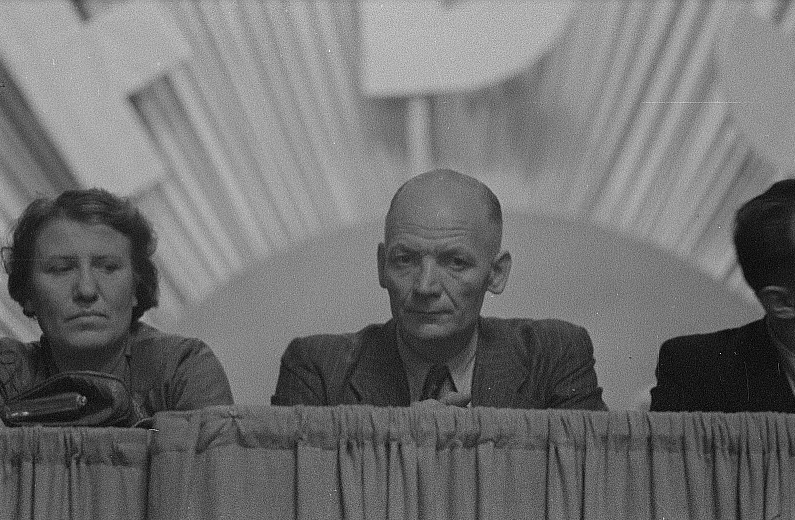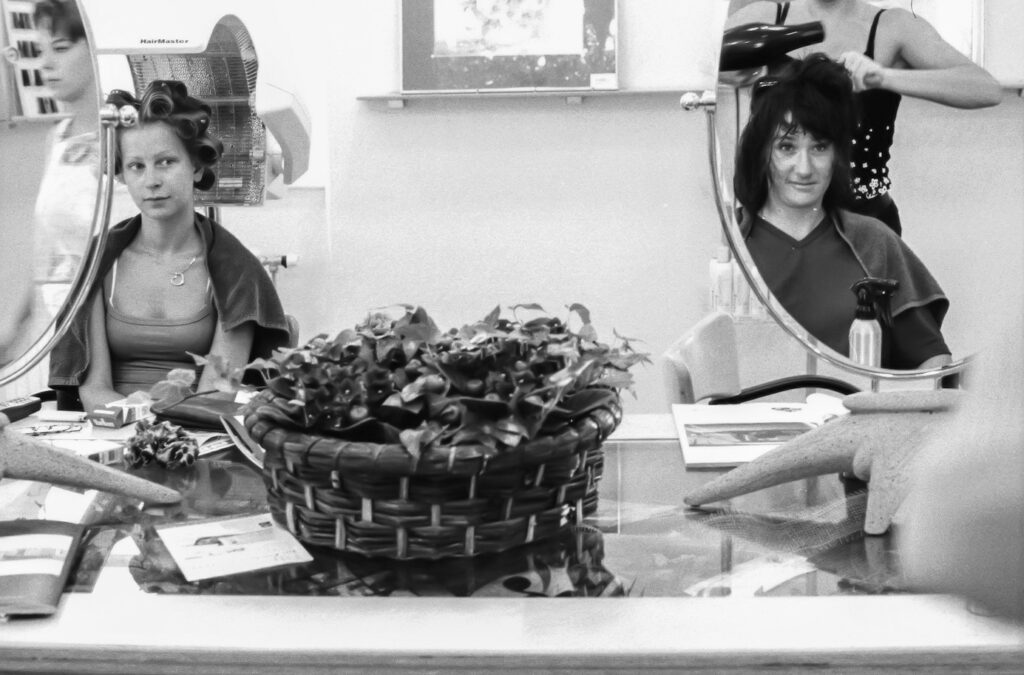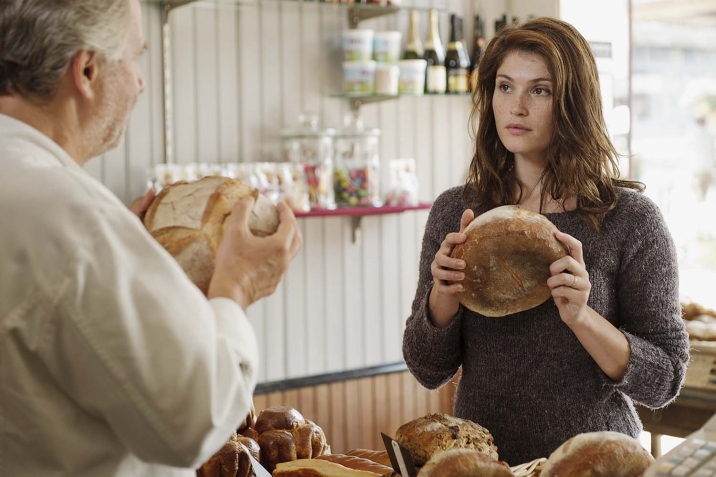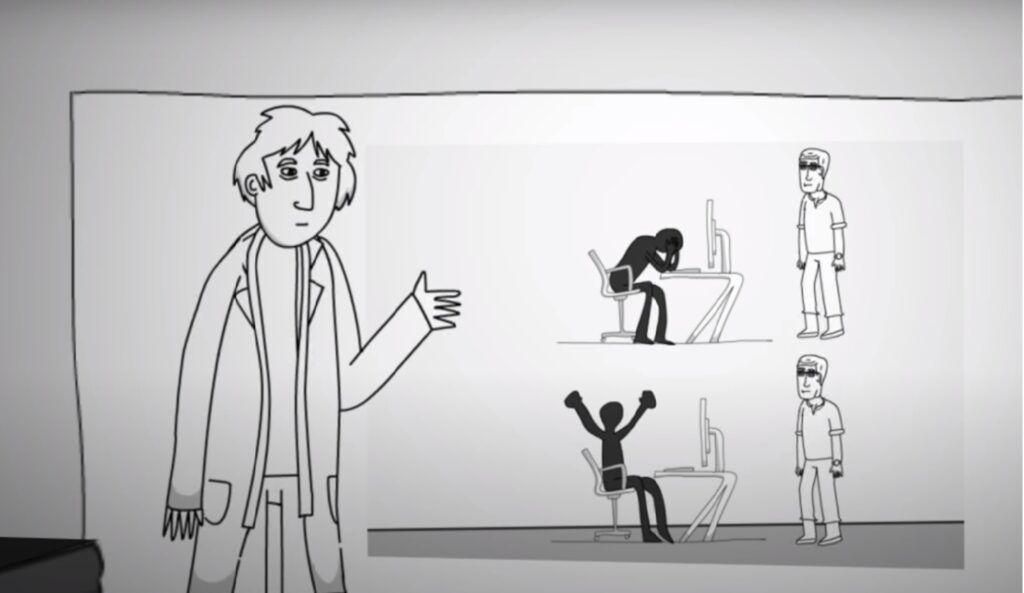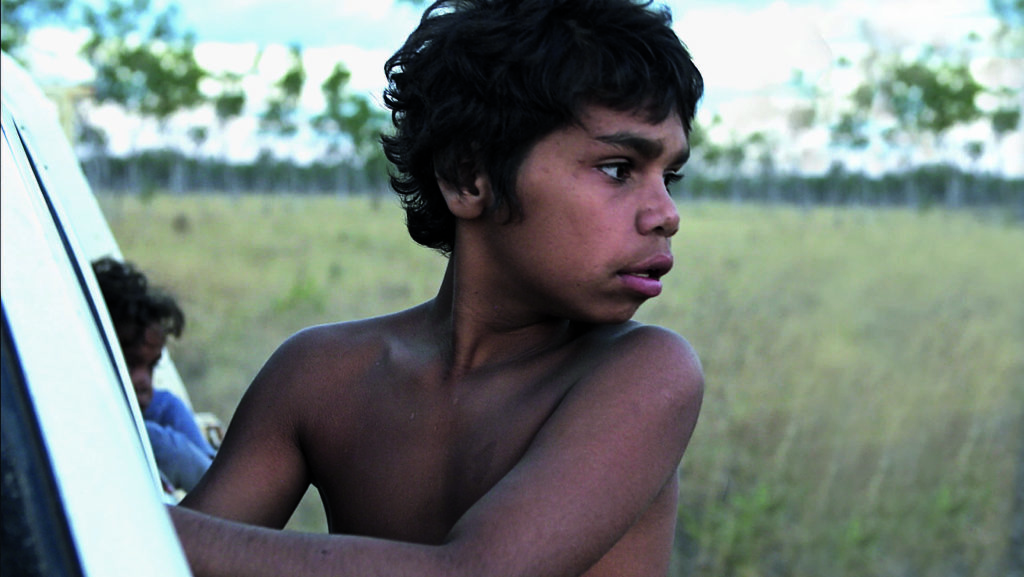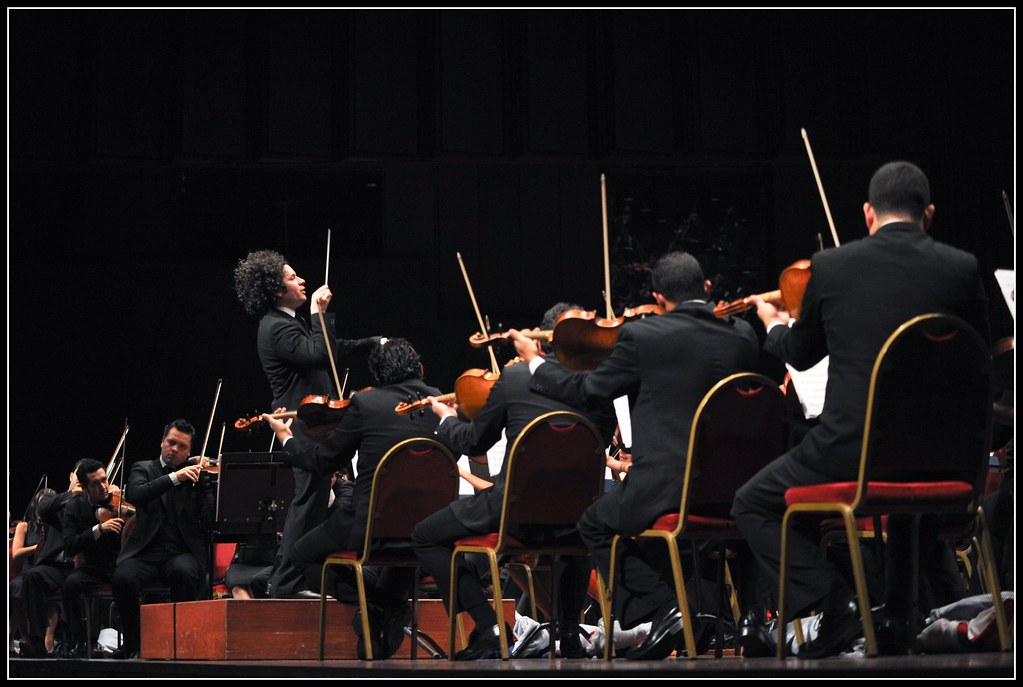When pictures of economy went into motion
As anyone who has studied at an economics faculty knows: students of economics hardly learn to model reality. They learn to operate within models by manipulating symbols instead. And where there is not enough teaching and learning for seeing beyond the symbols and what they mean, there is a risk of confusing calculation with thinking. This is not solely a problem of higher education didactics, it is also a problem of democratic politics. For in an enlightened democracy, the shaping of the economy concerns everyone. The urge to mathematise means that economists not only fail to teach their own junior staff, but also fail in teaching the citizens of the economy.
A recently published book reminds us of an educational film “Unemployment and Money” by Michael Polanyi from 1940 that suggests that there is another way (Biro, 2020). It is the first film ever to look at economics through the lens of economic theory. It offers “Keynes to go” for everyone, is courageous in its didactic reduction and demonstrates the pedagogical power of the moving image in economic didactics.
I owe knowing the existence of this film to Jörg Markowitsch, it touched me because I spent years working through the epistemological works of its creator (Neuweg, 2020). The fact that this film is also about my core business, business education, is a strange coincidence.
Michael Polanyi was originally a chemist, later an epistemologist and briefly an economist in between — as was his equally famous brother Karl. To this day, he is best known as the philosopher who examined human cognition starting from the fact that “we know more than we can tell”. But only superficially does his interest in tacit knowledge have little to do with his rather forgotten economic works. In fact, Polanyi’s thinking always revolves around the indispensable power of the subject and its personal freedom — around a “personal knowledge” (Polanyi, 1958) that cannot be entirely objectifiable and formalised, as well as around an economic system that cannot be centrally planned and is dependent on personal freedom.
And so, Polanyi wants to enlighten us with the then modern means of film about a third way between laissez-faire capitalism and planned economy. As an unrelenting reminder that signs only become knowledge when they are given meaning, he demonstrates how images in motion can support understanding. Even if, as he once wrote to his sister Mausi, only a competent and enthusiastic teacher can make sensible use of the film (Scott & Moleski, 2005, p. 179).
Georg Hans Neuweg is Professor of Business and Vocational Education and Training at the Johann Kepler University in Linz and expert on Michael Polanyi’s theory of tacit knowledge.
References
Bíró, G. (2020). The Economic Thought of Michael Polanyi. Milton Park, Abingdon and New York: Routledge.
Neuweg, G. H. (2020). Könnerschaft und implizites Wissen. Zur lehr-lerntheoretischen Bedeutung der Erkenntnis- und Wissenstheorie Michael Polanyis (4., aktualis. Aufl.). Münster, New York: Waxmann.
Polanyi, M. (1940). Economics on the Screen. Documentary News Letter (August, 1940): 2.
Polanyi, M. (1958). Personal Knowledge. Towards a Post-Critical Philosophy. Chicago: The University of Chicago Press.
Scott, W. T. & Moleski, M. X. (2005). Michael Polanyi. Scientist and Philosopher. Oxford University Press.
„Unemployment and Money“ (1940), Michael Polanyi; the YouTube image erroneously shows a portrait of his brother Karl Polanyi; VIDEO STARTS AT SEC 23!
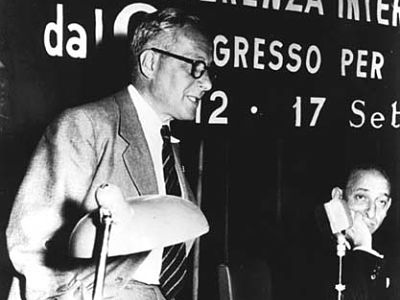
Michael Polanyi and the French Philosopher Raymond Aron (right) at the Congress on Cultural Freedom, Milan, 1956
© Courtesy of John C. Polanyi
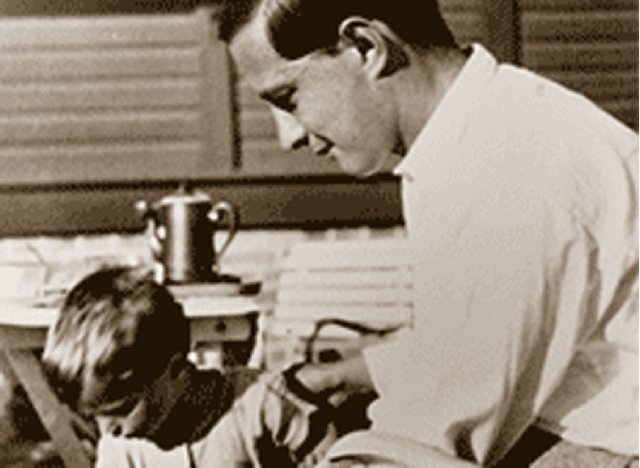
Michael Polanyi with his son John who was awarded the 1986 Nobel Prize in Chemistry, 1931
© Courtesy of John C. Polanyi
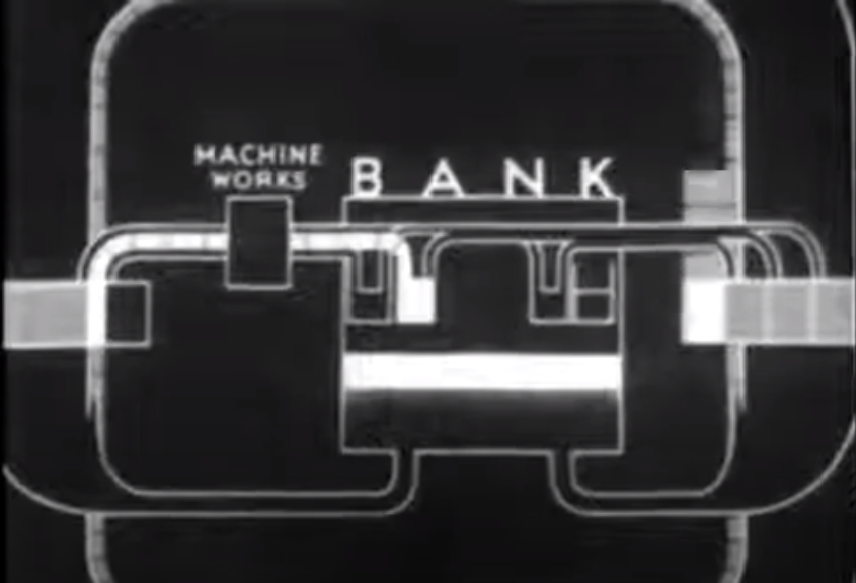
„Unemployment and Money“ (1940), Michael Polanyi, Filmstill
© The Museum of Modern Art Film Library
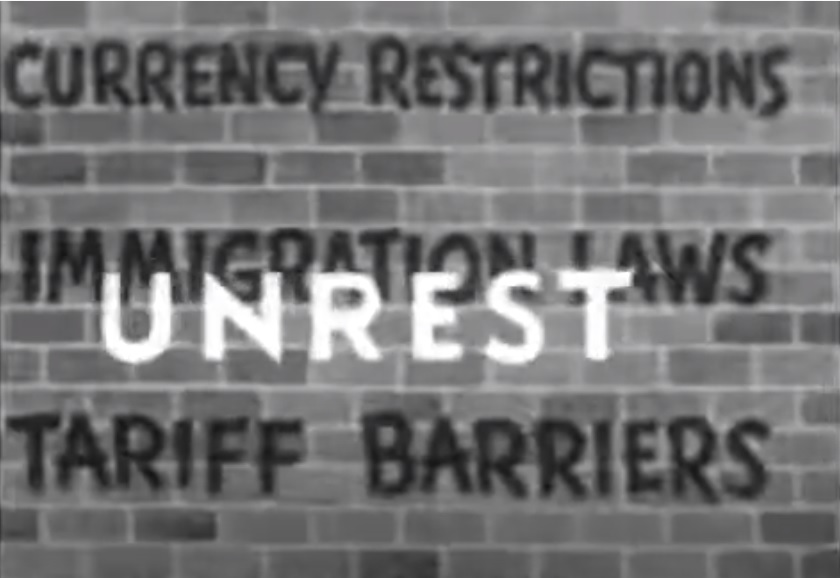
„Unemployment and Money“ (1940), Michael Polanyi, Filmstill
© The Museum of Modern Art Film Library
When pictures of economy went into motion
As anyone who has studied at an economics faculty knows: students of economics hardly learn to model reality. They learn to operate within models by manipulating symbols instead. And where there is not enough teaching and learning for seeing beyond the symbols and what they mean, there is a risk of confusing calculation with thinking. This is not solely a problem of higher education didactics, it is also a problem of democratic politics. For in an enlightened democracy, the shaping of the economy concerns everyone. The urge to mathematise means that economists not only fail to teach their own junior staff, but also fail in teaching the citizens of the economy.
A recently published book reminds us of an educational film “Unemployment and Money” by Michael Polanyi from 1940 that suggests that there is another way (Biro, 2020). It is the first film ever to look at economics through the lens of economic theory. It offers “Keynes to go” for everyone, is courageous in its didactic reduction and demonstrates the pedagogical power of the moving image in economic didactics.
I owe knowing the existence of this film to Jörg Markowitsch, it touched me because I spent years working through the epistemological works of its creator (Neuweg, 2020). The fact that this film is also about my core business, business education, is a strange coincidence.
Michael Polanyi was originally a chemist, later an epistemologist and briefly an economist in between — as was his equally famous brother Karl. To this day, he is best known as the philosopher who examined human cognition starting from the fact that “we know more than we can tell”. But only superficially does his interest in tacit knowledge have little to do with his rather forgotten economic works. In fact, Polanyi’s thinking always revolves around the indispensable power of the subject and its personal freedom — around a “personal knowledge” (Polanyi, 1958) that cannot be entirely objectifiable and formalised, as well as around an economic system that cannot be centrally planned and is dependent on personal freedom.
And so, Polanyi wants to enlighten us with the then modern means of film about a third way between laissez-faire capitalism and planned economy. As an unrelenting reminder that signs only become knowledge when they are given meaning, he demonstrates how images in motion can support understanding. Even if, as he once wrote to his sister Mausi, only a competent and enthusiastic teacher can make sensible use of the film (Scott & Moleski, 2005, p. 179).
Georg Hans Neuweg is Professor of Business and Vocational Education and Training at the Johann Kepler University in Linz and expert on Michael Polanyi’s theory of tacit knowledge.
References
Bíró, G. (2020). The Economic Thought of Michael Polanyi. Milton Park, Abingdon and New York: Routledge.
Neuweg, G. H. (2020). Könnerschaft und implizites Wissen. Zur lehr-lerntheoretischen Bedeutung der Erkenntnis- und Wissenstheorie Michael Polanyis (4., aktualis. Aufl.). Münster, New York: Waxmann.
Polanyi, M. (1940). Economics on the Screen. Documentary News Letter (August, 1940): 2.
Polanyi, M. (1958). Personal Knowledge. Towards a Post-Critical Philosophy. Chicago: The University of Chicago Press.
Scott, W. T. & Moleski, M. X. (2005). Michael Polanyi. Scientist and Philosopher. Oxford University Press.
„Unemployment and Money“ (1940), Michael Polanyi; the YouTube image erroneously shows a portrait of his brother Karl Polanyi; VIDEO STARTS AT SEC 23!

Michael Polanyi and the French Philosopher Raymond Aron (right) at the Congress on Cultural Freedom, Milan, 1956
© Courtesy of John C. Polanyi

Michael Polanyi with his son John who was awarded the 1986 Nobel Prize in Chemistry, 1931
© Courtesy of John C. Polanyi

„Unemployment and Money“ (1940), Michael Polanyi, Filmstill
© The Museum of Modern Art Film Library

„Unemployment and Money“ (1940), Michael Polanyi, Filmstill
© The Museum of Modern Art Film Library
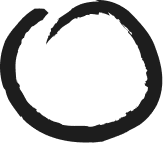
Adolf Hennecke — Hero of the Battle of Production
Where labour and the heroic merge: the glorification of labour in real socialism.
Finding and Cultivating the Self in Hair: On the Wizardry of Hairdressers
The key to successfully creating a hairstyle is, of course, the hairdresser's skill. But the art of hair is not limited to instrumental skills, it also includes the 'culturality' of hair. A contemporary critique of a traditional profession.
The baker’s routine gestures: a professional ‘classic’?
In contemporary cinema, we often don’t question seemingly cliché images of bakers at work as seen in Antoine Fontaine's "Gemma Bovery" (2014) or Luke Jin's short film "La Boulangerie" (2017), but perhaps we should.
Essential Workers vs. Bullshit Jobs
How will the Covid-19 pandemic change the world of work? Will essential workers be more valued in the future or will ‘bullshit’ jobs continue to increase?
Plea for autochthone education systems
'In my blood it runs' (2019) is an intimate portrait of an Aboriginal boy and his family, as well as testimony to the glaring shortcomings of the Australian education system in dealing with their indigenous population.
Efficiency kills
US economist William J. Baumol found out why the efficiency principle is killing the service sector - and ultimately contributing to the COVID-19 mortality rate.

About this blog
By selecting a film or an image, this blog literally illustrates the vast sphere of work, employment & education in an open collection of academic, artistic and also anecdotal findings.
About us
Konrad Wakolbinger makes documentary films about work and life. Jörg Markowitsch does research on education and work. They are both based in Vienna. Information on guest authors can be found in their corresponding articles.
More about
Interested in more? Find recommendations on relevant festivals, film collections and literature here.
About this blog
With picking a film or an image, this blog literally illustrates the vast sphere of work, employment & education in an open collection of academic, artistic and also anecdotal findings.
About us
Konrad Wakolbinger makes documentary films about work and life. Jörg Markowitsch does research on education and work. We both work in Vienna. Information on guest authors can be found in their respective articles.
More about
Interested in more? Find recommendations on relevant festivals, film collections and literature here.


